Hydrangeas: The Showstopping Plants For Your Front Of House
Hydrangeas: The Showstopping Plants for Your Front of House
Hydrangeas are some of the most popular flowering shrubs in the world, and for good reason. They come in a wide variety of colors, sizes, and shapes, and they can add a touch of elegance and beauty to any front yard.
If you're thinking about adding hydrangeas to your front yard, there are a few things you need to know. First, hydrangeas need the right conditions to thrive. They prefer partial shade and moist, well-drained soil. If you live in an area with hot summers, you may need to water your hydrangeas more frequently.
Once you've found the right spot for your hydrangeas, it's time to plant them. Hydrangeas can be planted in the spring or fall. When planting, dig a hole that is twice as wide as the root ball of the hydrangea. Backfill the hole with soil, being careful not to bury the crown of the plant. Water the hydrangea well after planting.
Hydrangeas are relatively easy to care for. Once they are established, they only need to be watered regularly, especially during hot, dry weather. You should also fertilize your hydrangeas once a year in the spring.
With proper care, hydrangeas will bloom for many years. They are a beautiful and long-lasting addition to any front yard.
Here are some of the most popular types of hydrangeas for the front of the house:
- Bigleaf hydrangeas (Hydrangea macrophylla) are the most common type of hydrangea. They have large, showy blooms that can range in color from blue to pink to white. Bigleaf hydrangeas prefer partial shade and moist, well-drained soil.
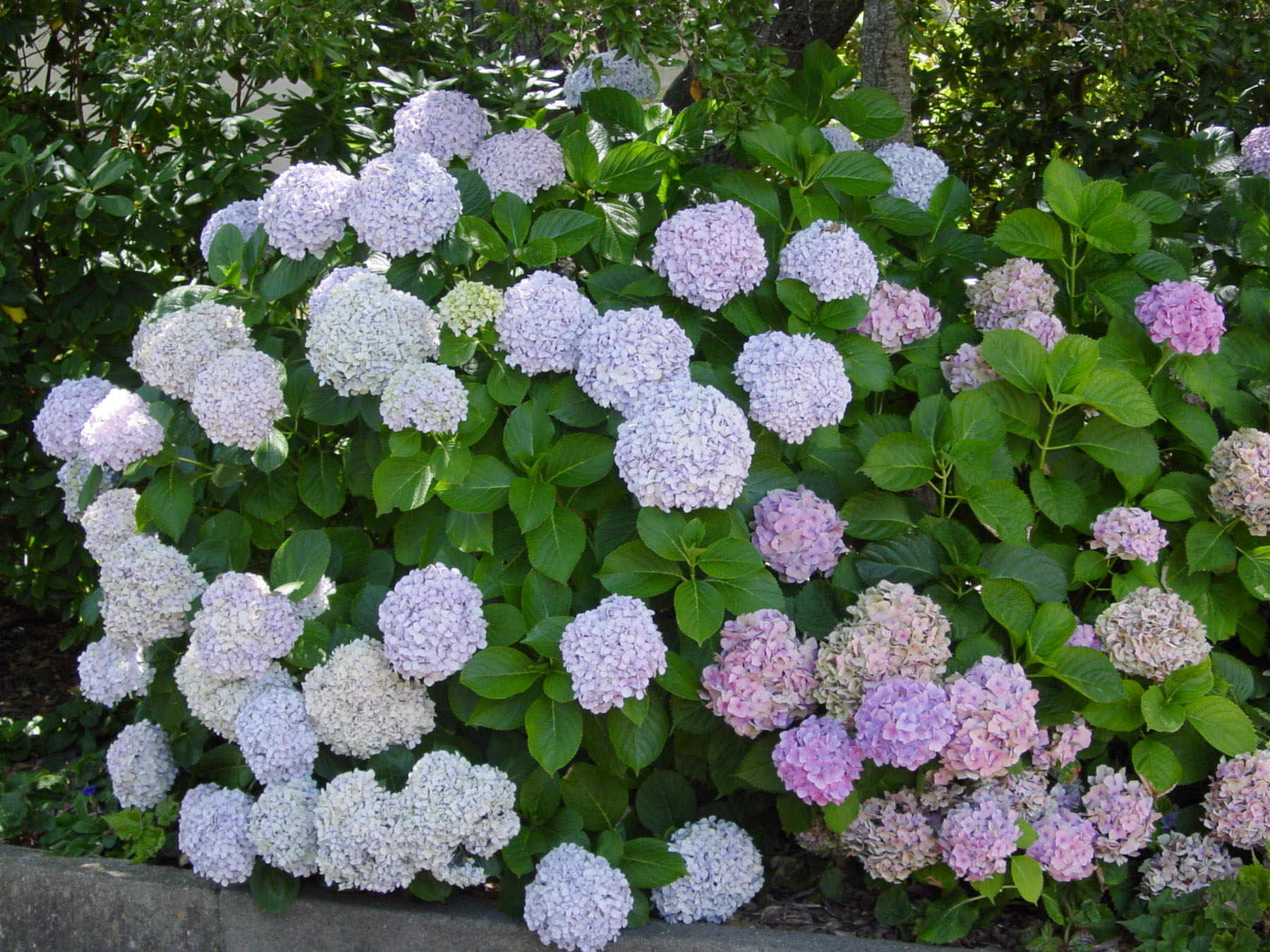
- Smooth hydrangeas (Hydrangea arborescens) are a bit hardier than bigleaf hydrangeas and can tolerate more sun. They have smaller blooms than bigleaf hydrangeas, but they are just as beautiful. Smooth hydrangeas are a good choice for front yards in hot, dry climates.

- Panicle hydrangeas (Hydrangea paniculata) are known for their large, cone-shaped blooms. They prefer full sun and well-drained soil. Panicle hydrangeas are a good choice for front yards in windy areas.
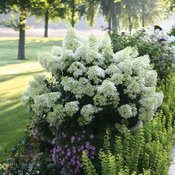
- Oakleaf hydrangeas (Hydrangea quercifolia) are a North American native that is known for its beautiful, oak-shaped leaves. The blooms are smaller than those of other types of hydrangeas, but they are still very attractive. Oakleaf hydrangeas prefer partial shade and moist, well-drained soil.
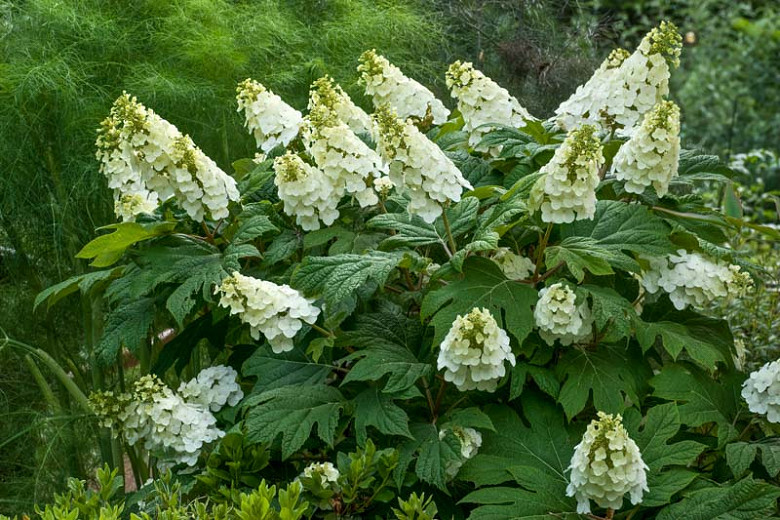
No matter what type of hydrangea you choose, you're sure to add a touch of beauty and elegance to your front yard.
Hydrangeas are a beautiful and versatile plant that can add a touch of elegance to any front yard. If you're thinking about planting hydrangeas in front of your house, there are a few things you'll need to keep in mind. First, hydrangeas need moist, well-drained soil. They also prefer dappled shade, so avoid planting them in full sun.
Once you've found the perfect spot for your hydrangeas, it's time to start planting. Dig a hole that is twice as wide as the root ball of your hydrangea. Backfill the hole with soil, being careful not to bury the crown of the plant. Water the hydrangea well and mulch around the base to help retain moisture.
Hydrangeas are relatively easy to care for. Water them regularly, especially during hot, dry weather. Fertilize them once a year in the spring with a balanced fertilizer. Deadhead spent blooms to encourage new growth.
If you're looking for more information about hydrangeas, I recommend visiting . This website has a wealth of information on hydrangea care, including tips on planting, watering, fertilizing, and deadheading. You can also find a variety of hydrangea varieties to choose from, so you can find the perfect plants for your front yard.
FAQ of hydrangea front of house
1. What type of hydrangeas are best for the front of the house?
There are many different types of hydrangeas, so it's important to choose one that will thrive in the conditions in your area. If you live in a hot, sunny climate, you'll want to choose a hydrangea that prefers full sun. If you live in a cooler climate with more shade, you'll want to choose a hydrangea that prefers partial shade. Some popular types of hydrangeas for the front of the house include:
- Bigleaf hydrangeas (Hydrangea macrophylla): These hydrangeas are known for their large, showy blooms that can grow up to 12 inches in diameter. They prefer partial shade and moist, well-drained soil.

- Mophead hydrangeas (Hydrangea macrophylla): These hydrangeas are similar to bigleaf hydrangeas, but they have larger, more rounded blooms. They also prefer partial shade and moist, well-drained soil.
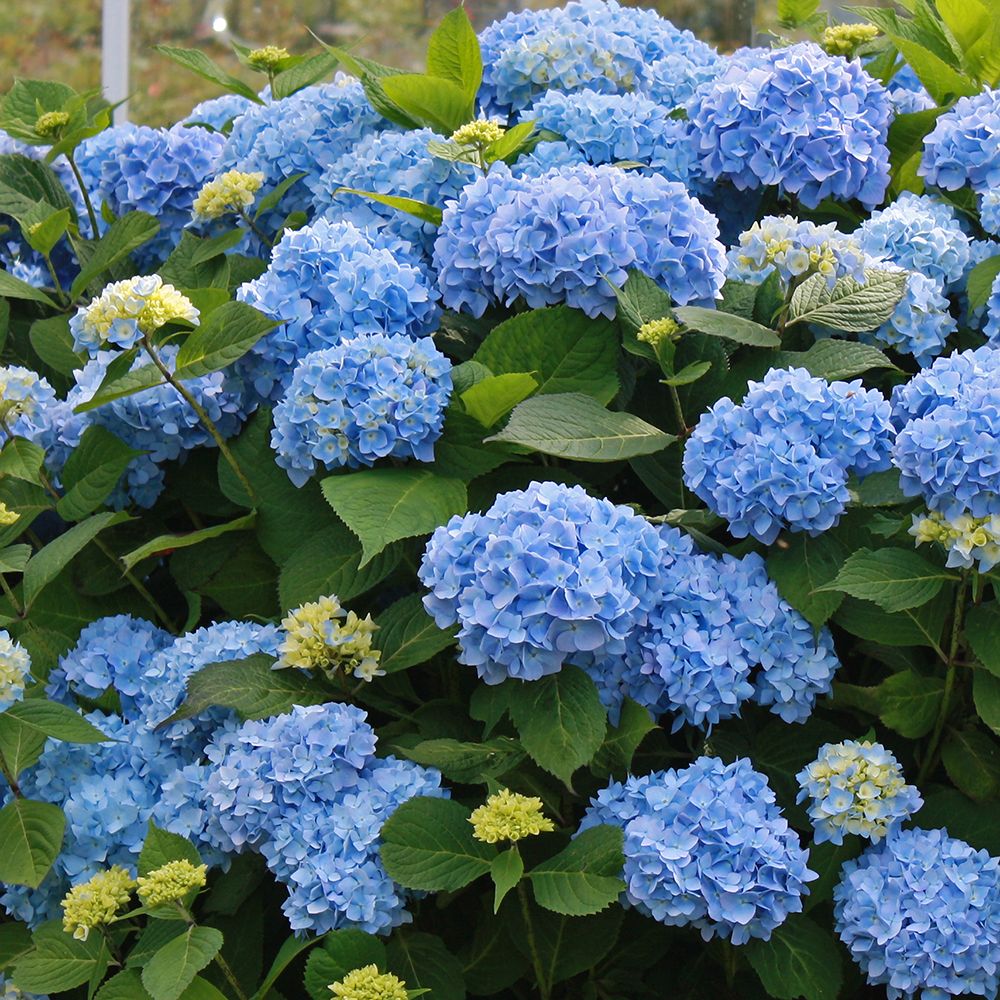
- Smooth hydrangeas (Hydrangea arborescens): These hydrangeas are smaller than bigleaf and mophead hydrangeas, but they are more cold-hardy and can tolerate full sun. They also bloom for a longer period of time, from early summer to fall.

- Panicle hydrangeas (Hydrangea paniculata): These hydrangeas have tall, upright stems that can grow up to 6 feet tall. They produce large, cone-shaped blooms that bloom in late summer and early fall. They prefer full sun and moist, well-drained soil.

2. How much sunlight do hydrangeas need?
As mentioned above, the amount of sunlight that hydrangeas need depends on the type of hydrangea. Bigleaf and mophead hydrangeas prefer partial shade, while smooth hydrangeas and panicle hydrangeas can tolerate full sun.
If you're not sure how much sunlight your hydrangeas need, it's always best to err on the side of caution and plant them in a spot that gets partial shade. This will help to prevent the leaves from burning in hot, sunny weather.
3. How much water do hydrangeas need?
Hydrangeas need moist, well-drained soil. They should be watered deeply once a week, or more often during hot, dry weather.
It's important to avoid overwatering hydrangeas, as this can lead to root rot. If you're not sure how often to water your hydrangeas, it's always best to err on the side of underwatering.
4. How do I fertilize hydrangeas?
Hydrangeas should be fertilized in early spring and again in late summer. Use a balanced fertilizer, such as 10-10-10, and follow the directions on the label.
You can also fertilize hydrangeas with compost or manure. These organic fertilizers will help to improve the soil and provide nutrients that hydrangeas need to thrive.
5. How do I deadhead hydrangeas?
Deadheading is the process of removing spent blooms. This will help to encourage new growth and more blooms.
To deadhead hydrangeas, simply pinch off the spent blooms with your fingers. You can also use a pair of scissors to cut the blooms off at the base of the stem.
Image of hydrangea front of house
- A white hydrangea bush planted in a row in front of a white house. The hydrangeas are in full bloom and their flowers are large and fluffy.

- A pink hydrangea bush planted in a large pot in front of a blue house. The hydrangea is in full bloom and its flowers are large and round.
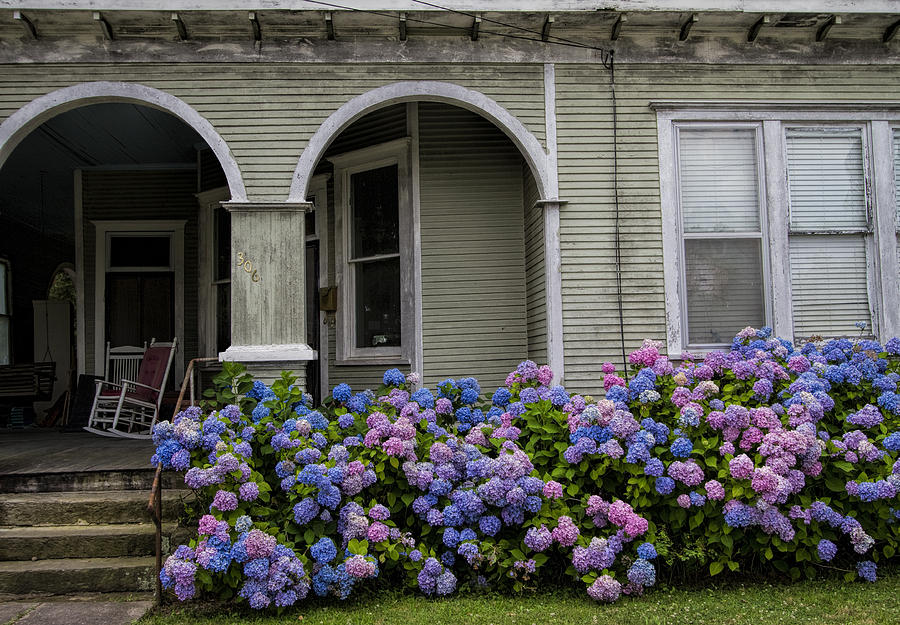
- A large blue hydrangea bush planted in front of a red house. The hydrangea is in full bloom and its flowers are large and cone-shaped.

- A group of hydrangea bushes planted in front of a gray house. The hydrangeas are in different colors, including white, pink, and blue.

- A hydrangea archway planted in front of a white house. The archway is covered in hydrangeas that are in full bloom.

Post a Comment for "Hydrangeas: The Showstopping Plants For Your Front Of House"